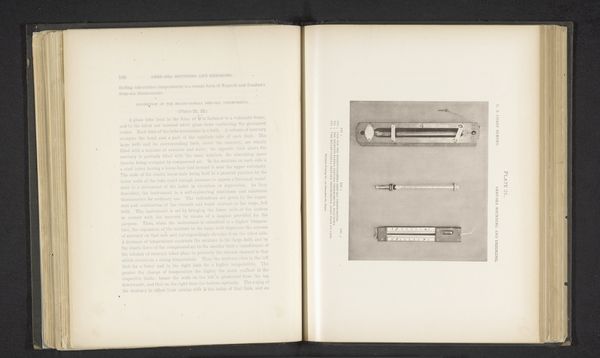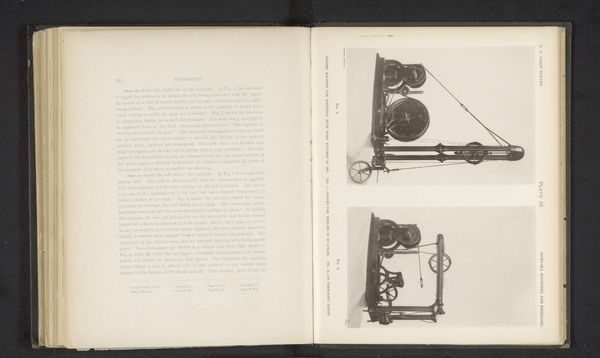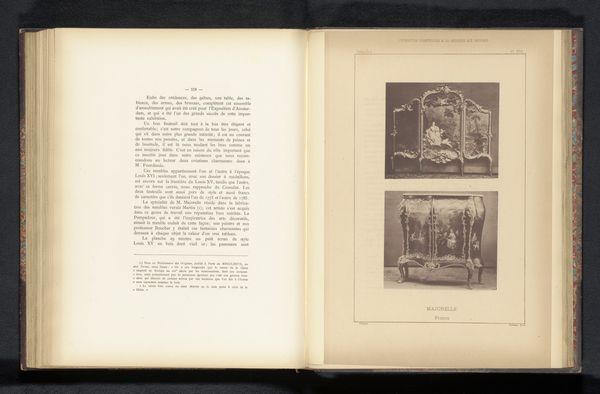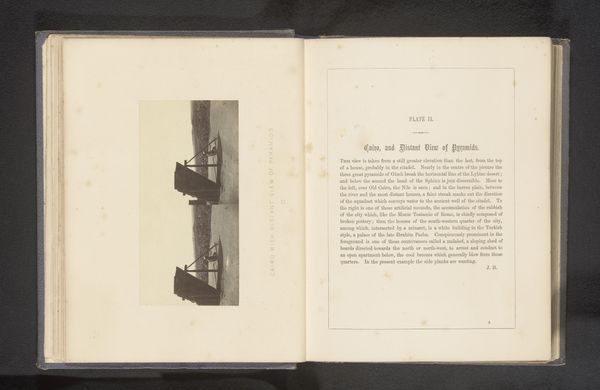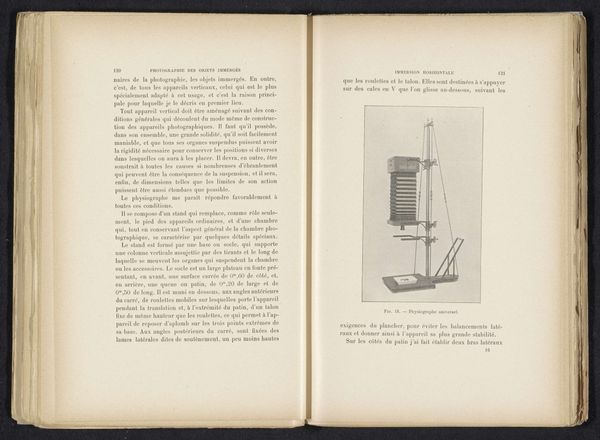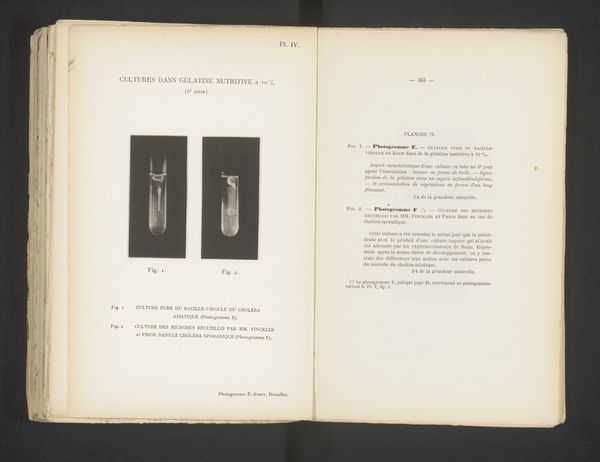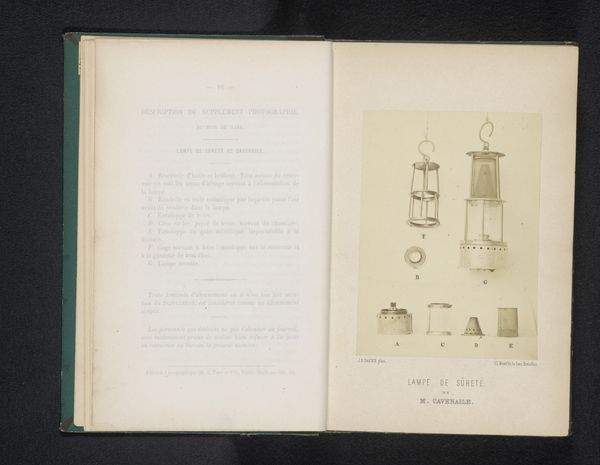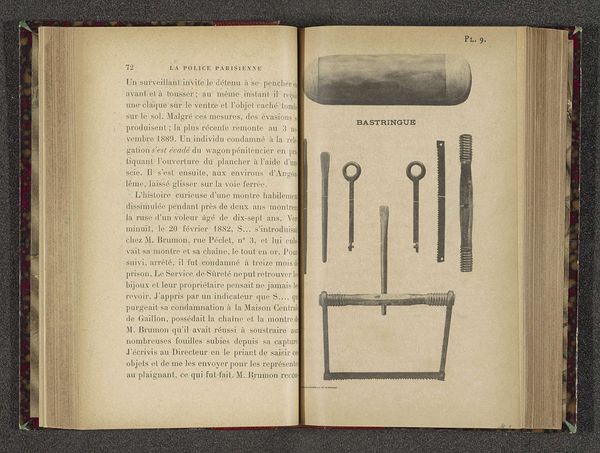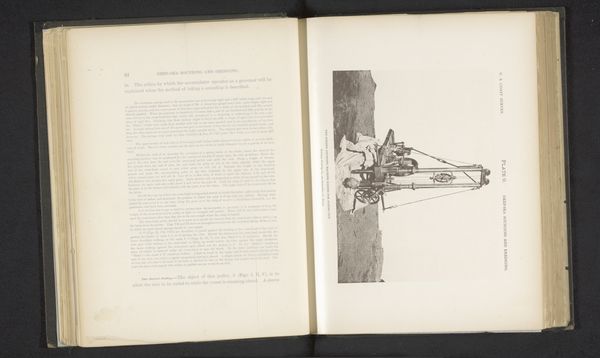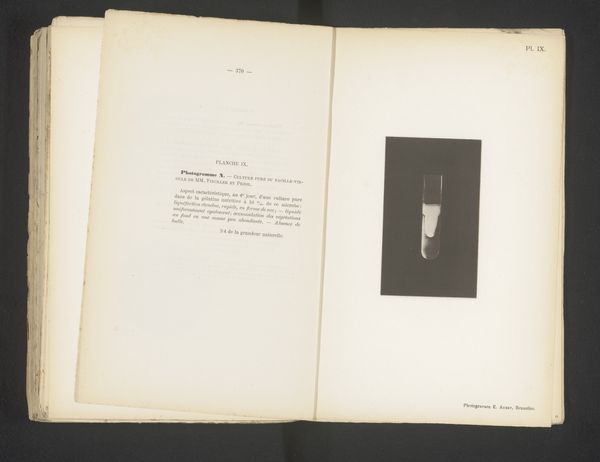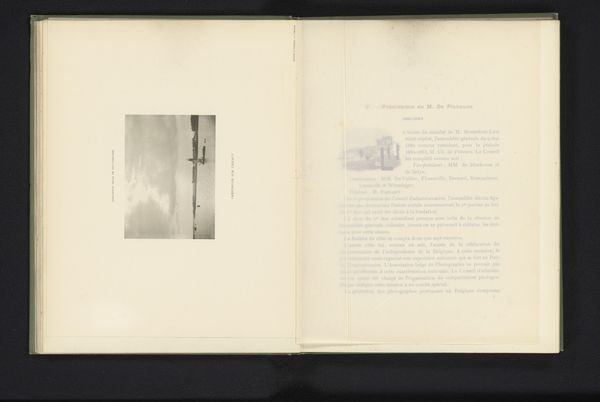
print, photography
# print
#
photography
#
academic-art
#
realism
Dimensions: height 200 mm, width 138 mm
Copyright: Rijks Museum: Open Domain
Curator: This photograph, taken before 1880 by an anonymous creator, presents what’s described as a ‘Thermometerbehuizing en een sondeerstang’. It seems to be part of an academic publication, documenting scientific equipment. Editor: It feels very Victorian steampunk, doesn’t it? All restrained precision, but hinting at strange technologies, presented in this surprisingly graceful and technical way. Like something Jules Verne might sketch during his tea break. Curator: Indeed, images like this played a critical role in disseminating knowledge and standardizing scientific practices during the period. Photography was just becoming established and helped make complex instruments understandable across geographic distances. It gave way to objectivity. Editor: Right. What strikes me, besides the beauty of this objective approach, is this photograph’s own kind of “making visible”. To depict the thermometer's design on the right along with the different components broken apart is such an early form of diagrammatic information that also gives it a strange form of artistic character. What sort of narratives were associated with this then? Curator: I see the use of such illustrations as being tied to burgeoning fields of scientific inquiry and standardization. There's also the aspect of the rise of professional societies to legitimize that particular knowledge through things such as journals, congresses, illustrated documentation. The presentation lends credibility. Editor: Well, for the modern viewer, these disembodied devices—free from any human or social context—lend an unsettling and slightly surreal mood. And, like you said, knowing this object aimed for the pure communication of facts, while still being grounded to something akin to artistry is really curious. What could this instrument tell us about a world otherwise unseen? It almost gives the thermometer's design its own agency. Curator: Certainly. It highlights how instruments shape our understanding of the world—and also how our visual representations of these objects are subject to just as much societal control or agenda setting. Editor: In the end, though, this makes me question what objectivity really looks like through the lens of time and the ever-changing perspectives that help evolve it. Thanks for adding some temperature to it!
Comments
No comments
Be the first to comment and join the conversation on the ultimate creative platform.

